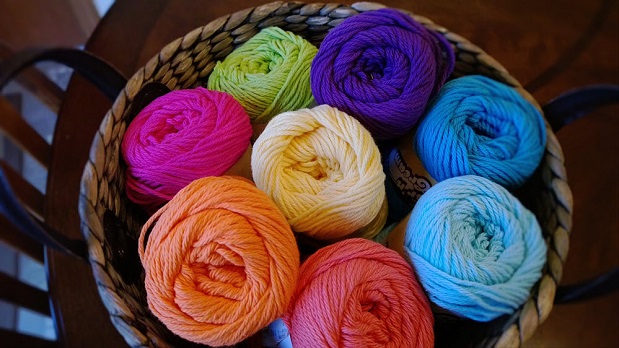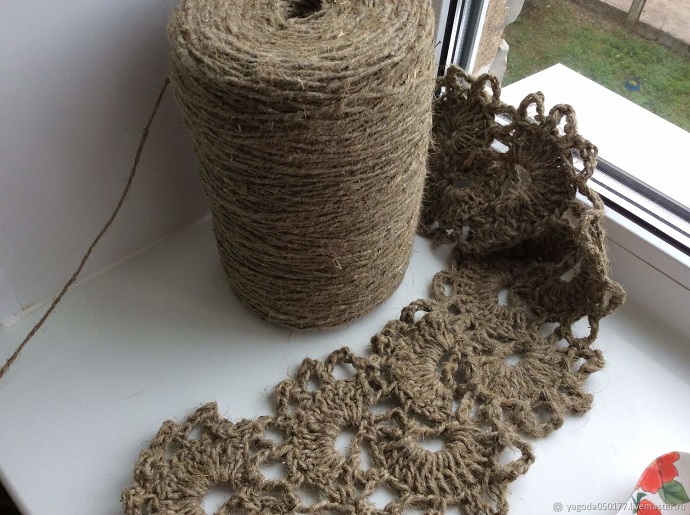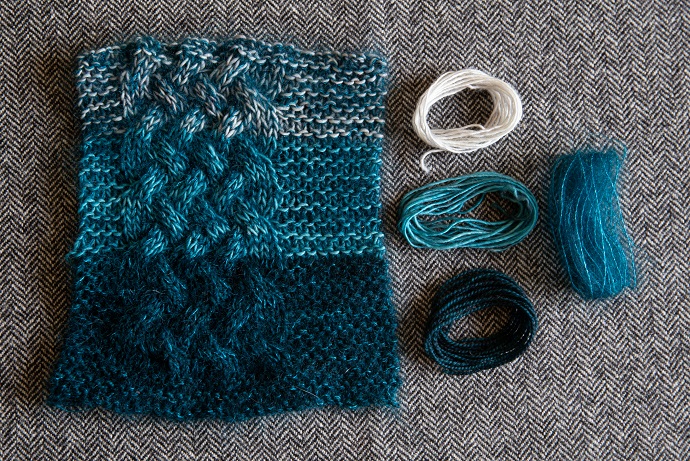The Importance of Choosing the Right Yarn for Your Knitting Project
Knitting is one of the oldest methods of making clothes. It’s a process that involves continuously interlinking or knotting series of loops of yarn. Yarn is a textile made of wool, cotton or acrylic. It’s made from strands, also referred to as piles, twisted together to form one thick string of material. Most commonly, it’s used for weaving into a thick textile through knitting or crochet. It comes in single, long strands, called skeins, which can be rolled into balls by hand or through a yarn ball winder.
Every project requires specific yarn but choosing the right one can be an overwhelming task, especially if you’re new into the knitting world. Learning about yarn weight can make things easier for you and allow you more creativity in your choices. Also, it can help you adjust knitting instructions to different types of yarn.

Source: chillavalleyalpacas.co.uk
Yarn Weights
DK knitting yarn is probably the most common and default weight for knitting and crochet. It’s highly versatile and suitable for almost any kind of project. There is a huge range of choices, so you can easily get any colour, yarn structure, effect and fibre content in DK weight yarn. Yarn weight refers to the thickness of the yarn, from super fine to super bulky.
There are a few different categories of yarn weights, such as Aran, sport, bulky, lace and more. Aran yarns are strong and rigid and are a great choice if you’re looking for a yarn that looks delicate. Lace weight yarns are very fine, while bulky yarns can be worked up quickly on large needles.
The specific weight of yarn can produce a somewhat predictable number of stitches when using a particular-sized needle. Most manufacturers make it easy for you to determine the weight of a particular yarn. DK yarns are easy to handle and work up faster than superfine yarns. Typically, they come with a recommended knitting needle size of 4 to 4.5 mm and recommended needle size hooks of 4.5 to 5.5 mm.
A finer weight is ideal for lightweight garments and accessories, while heavier yarn will make a thicker, bulkier project. Understanding yarn weights will help you get the right density and drape in your finished project. You can choose DK knitting yarn for sweaters, wraps, shawls, mid-weight socks, baby blankets and children clothing. Sometimes it can be referred to as baby yarn or light yarn.
In the craft world, DK stands for double knitting yarn. It can be a lot of things, like an actual knitting technique, or holding two lengths of yarn together while knitting or crocheting. However, it doesn’t mean that you have to use it exclusively for projects using the double knitted technique. Also, you don’t have to necessarily hold two strands of it together to stitch it. It ranges between light and medium weight.
The term double knit describes the weight of the yarn that lies between sports and worsted weight yarn. DK weight yarn is firmer and more stable than other knits as well as more comfortable to use. It’s less stretchy and the fabric feels firm and thick, hence more durable. It’s easy to knit, which makes it a great choice for beginners.

Source: yarnandknitting.com
How to Choose the Right Yarn for Your Knitting Project
Hand knitting yarns can be divided into three categories – plant fibres, animal fibres and synthetic fibres. Each fibre type has its characteristics, including durability, washability, elasticity, heat retention. All of these are important factors to consider when choosing the best yarn for your next knitting project.
Cotton
This is plant-based fibre, one of the most commonly used fibres for knitting projects. It has defining characteristics of strength, versatility and durability. Cotton is lightweight and breathable and has a good drape, but it’s non-elastic.

Source: livemaster.com
Linen
Similar to cotton, linen yarn is lightweight and cool and has a good stitch structure that drapes well. It’s a durable and strong fibre, antifungal and antibacterial as well.
Wool
This is a naturally sourced material from mammals, such as goats or sheep. It is a protein fibre, with antibacterial and antimicrobial properties, breathable, insulating, cooling and water-resistant. To improve durability, it’s often mixed in a blend with other fibres.
Alpaca
This is the least elastic wool fibre that offers beautiful drape. It’s spun from the fleece of alpaca and is known as hypoallergenic dense fibre. It’s a good choice for people with sensitive skin or baby knitwear.

Source: blog.tincanknits.com
Mohair
Shorn from Angora goats, this is a luxurious and fluffy fibre, with a soft sheen, and it’s considered one of the warmest animal fibres. It’s very elastic and sagging resistant. Mohair can be blended with wool or silk to add weight.
Acrylic
Synthetic, or man-made fibres, are durable and hypoallergenic. Acrylic is suitable for accessory projects with structure and stitch definition. It’s similar to wool in terms of elasticity and recovery, a great solution for accessories that will stay true to size after extensive use and washing.
Once you’ve chosen yarn weight and fibre, it’s time to select the colour you prefer. If you’d like to see your knitting piece clearly, select a solid colour yarn. If buying in multiples, make sure the colours match as two balls of yarn may appear to be the same shade, but the subtle difference can become visible in the final product.
Knowing the differences between yarn weight and fibres can provide many benefits to your knitting experience. It can make an impact on your knitting abilities as you’ll be able to pick out a yarn of your desire rather than what the pattern specifies. So, you can create your designs and take your skill to a higher level.



